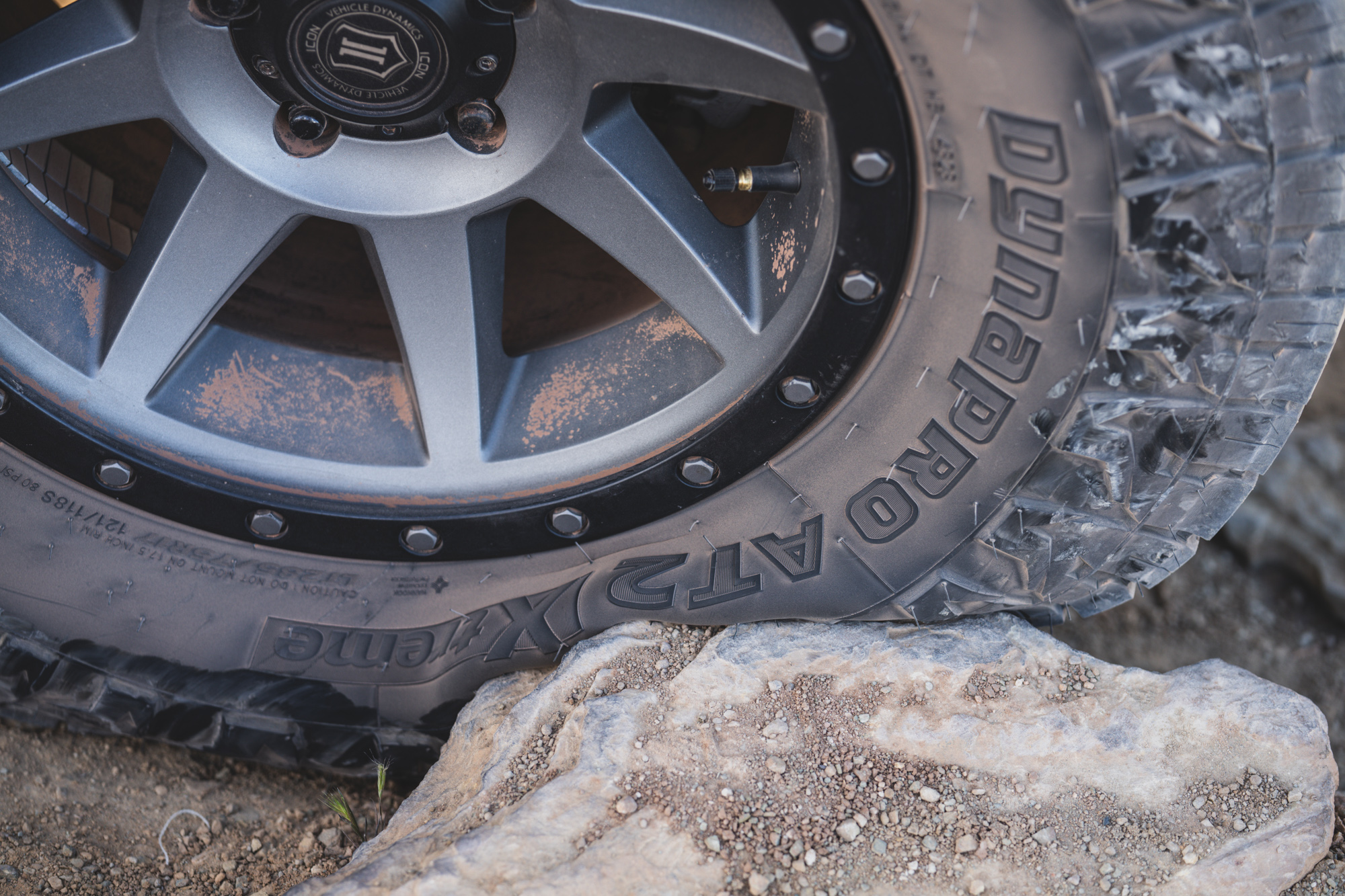Join us for episode three of our new educational series on Tires for Overlanding, where we review selecting various tires, driving and recovery, vehicle preparation, Tread Lightly, and more. For this third episode, we discuss the fundamentals of airing down tires for overlanding, including deformation, contact patch, mechanical keying, flotation, and more. We also discuss the right place to start with tire pressure and airing back up.
Presented by Hankook Dynapro Tire
Key Considerations When Airing Down for Overlanding:
- Inspect your tires before airing down or traveling off-road. Look for cuts, missing tread blocks, cracking, and uneven wear.
- Any tire type can be aired down for improved performance in sand, mud, and snow.
- For airing down in the rocks, extreme caution should be used with P-metric and passenger car tires to prevent sidewall damage.
- Airing down in the rocks is best reserved for LT tires, or units with 2-3 sidewall plies or more.
- A good starting point for backcountry tire pressures is either equal to the rim diameter, or half the vehicle manufacture’s recommended tire pressure, whichever is greater.
- In extremely soft or emergency conditions, tire pressures can be dropped to half of the above pressure again, but only to get unstuck, and only at low speeds. Avoid sharp turns.
- At low pressures and higher speeds, heat will building the tire quickly, so check tire temperatures regularly. Avoid driving on pavement at low pressures.
- Lower air pressures also improves driver comfort, particularly over corrugations and impregnated rock.
- Airing down does come at a cost to ground clearance, so balance must be considered in the rocks with lower clearance vehicles.
- Airing down also increases strain and pressures on the power steering system, so avoid turning the wheel at a dead stop.
- Airing down to trail pressures increases fuel consumption, so bring a compressor and air back up as soon as it is time to return to the road.



At lower pressures, the tire carcass can deform around the surface irregularities of the rock, improving traction and mechanical keying.
Airing down is best associated with flotation in sand, but it also works great in mud, snow, and even on hard rock.

Our No Compromise Clause: We do not accept advertorial content or allow advertising to influence our coverage, and our contributors are guaranteed editorial independence. Overland International may earn a small commission from affiliate links included in this article. We appreciate your support.


